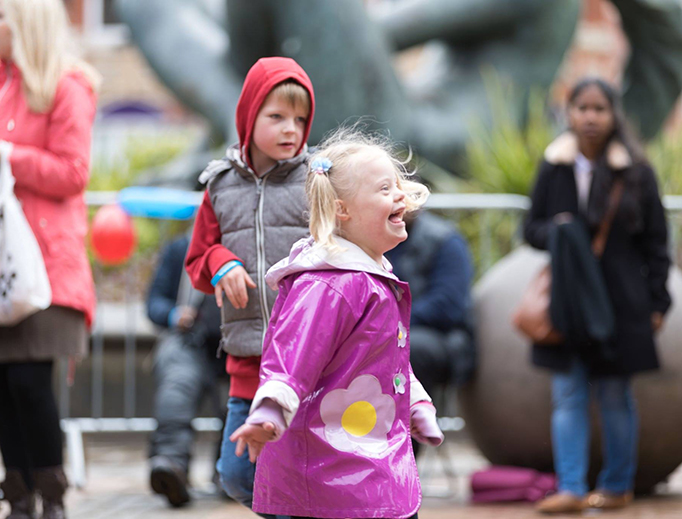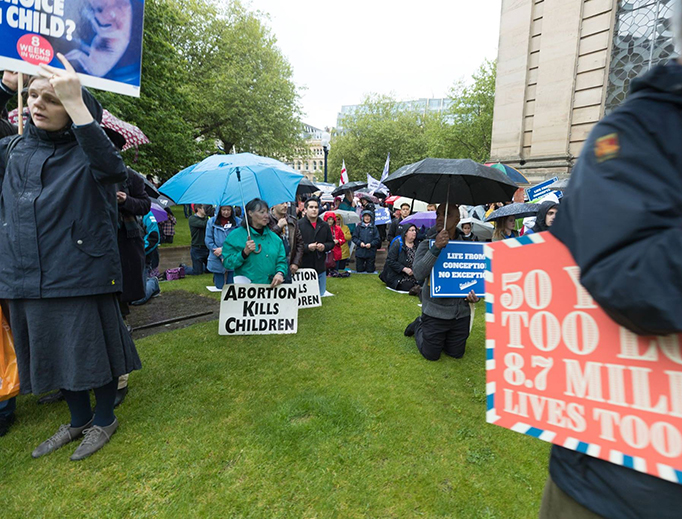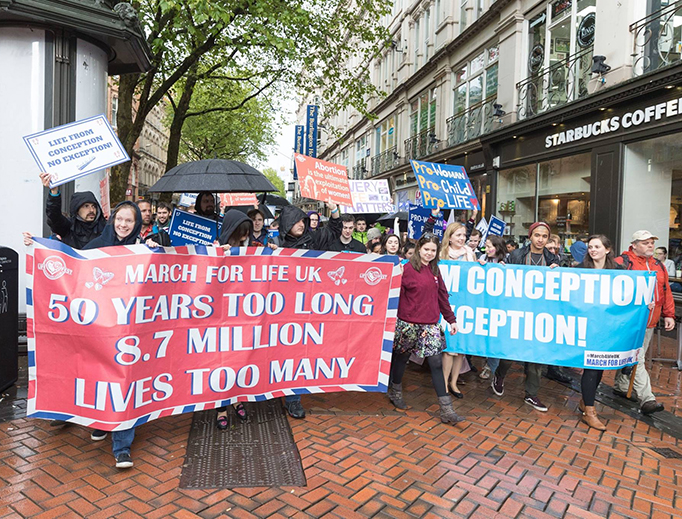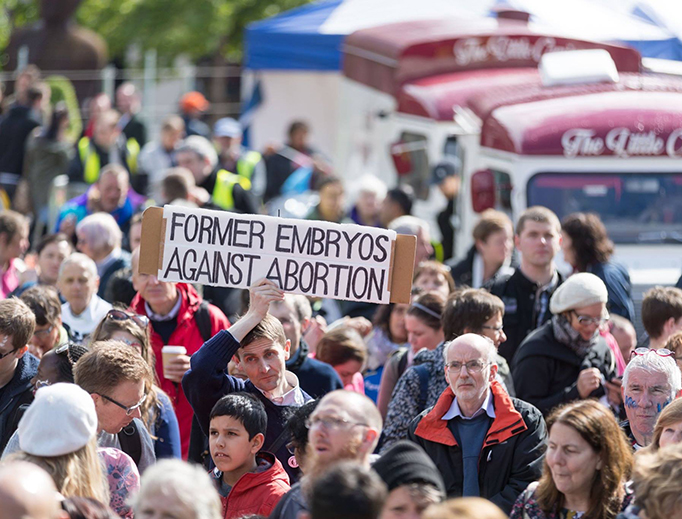After 50 Years of Legal Abortion, UK Pro-Lifers March Onward
Ignorance is bliss, but knowledge is power.

In recent weeks, there have been ever more setbacks to the pro-life movement in the United Kingdom.
Whether one considers the parliamentary moves to make all abortions legal, however late in the pregnancy, or the U.K. Parliament’s discussions on introducing measures intended to evade Northern Ireland’s strict laws on abortion, or the British Medical Council’s call for all abortions to be decriminalized, or the increasingly punitive restrictions on those who want to pray and offer ‘side walk counseling’ outside abortion clinics - however one views it, this is a dismal time.
Grimly, this month is also the 50th anniversary of the passing of the U.K.’s 1967 Abortion Act, when, for the first time, and only in cases that met strict criteria, abortion was made legal in Great Britain.
These gloomy thoughts cleared – somewhat at least – when viewing the pictures from an event a few months back. This occasion was the annual U.K. March for Life. Now in its fourth year, the March takes place in England’s second city, Birmingham. This was the first time I had attended the march, and I expected it to be a relatively modest affair. Stepping off the train from London, I made my way through city streets that showed no signs that the U.K.’s largest pro-life event was about to pass along them. Wistfully, these empty streets seemed to sum-up the situation in modern Britain with regard to the protection of the unborn: it is an issue that does not register with the general populace; the debates and legislative struggle over the banning of fox hunting, by contrast, called forth much more passion. The reasons for this are complex: a combination of misinformation about the harm an abortion inflicts on a mother as much as her child and a lack of specific information about what that procedure entails. All of which has continued to make British abortion statistics a silent holocaust.
The place where the Marchers for Life were assembling was a square in the center of Birmingham. An area had been set aside ringed with metal barriers. A large and professional stage had been set up for all the speeches and music planned. There were any number of stalls providing food for the soul and the body. The venue was already full. Alongside children aplenty, there were young people and families, as well as religious, nuns and brothers, and priests, all in habits or cassocks.
In fact, the whole thing had the look and feel of a festival. The atmosphere was one of joy. I noticed that the minute I entered the enclosure. There were smiles and greetings from unknown people - not a characteristic behavior of the British upon meeting strangers. But no one here was a stranger; we were all there for the same purpose. We were united, too, by our awareness of how grave the situation remained 50 years on after the legislative changes that had altered the moral vision of this country, in addition to denying life to an estimated 8.7 million fellow human beings.
Unexpectedly, I noticed something else. Outside the enclosure, there was a counter-demonstration. It was small at first, but, as I watched, people began to join it. I left the enclosure and went to find out more.
The crowd gathering there comprised types one might have expected at a counterdemonstration to a pro-life event. They were dressed as such groups have been for the last 40 years, namely, in the fashion of disaffected ‘street warriors.’ What was here on display was the Left of British politics. But not the Left that takes part in elections and debates; this was the Left that believes in revolutionary change via street protest. Predictably, the group shouted the same old chants: about nasty reactionaries and the ‘rights of women.’ Those who had come to celebrate and protect life were deemed to be lacking in ‘compassion.’ Worse, they were all dupes of U.S. foreign policy inspired by ‘Trumpism.’ In short, those inside the near-by enclosure were the running dogs of capitalism fueled by religious fundamentalism.
All of this, I expected. Tiresome as it was, it was consistent with the rhetoric deployed by the Left in British politics for the last 50 years. What I did not expect was the atmosphere around this speechmaking. There was a sense of threat. I saw a young Dominican, dressed in full habit, being harangued and verbally abused for daring to walk across the part of the square the pro-abortionists ‘occupied.’ I asked one of the young women in charge of this counter-demonstration whether it would not be better to go and speak with, debate even, the other women within the pro-life enclosure. She stared at me for a time, before, with an eerie dullness to her voice, informing me that ‘there was no point conversing with the opposition.’ And that was that. She and her fellow protestors were there merely to chant slogans and attempt to ruin the day of those gathered to celebrate the gift of life.
Later, once the pro-life speeches inside the enclosure started, so, too, did the abuse from the counter-demonstrators who were allowed to stand just outside it. These protestors played music, chanted their slogans again, roared abuse and foul language, all with children nearby. They were an ugly lot. I say that not because I disagree with their views, but because, I had observed this type of bullying before, and seen it justified as part of a wider ‘class struggle.’ I knew that the only thing such people really ever care about is being right – about their enemies. And enemies they must have, and so much the better if such enemies can be lumped together into the same stewing pot of a vast right-wing conspiracy.
Returning to the enclosure, I was glad to be back within that circle of light and away from the screaming hatred of the darkness without. Inside, I met my aunt, Margaret; she is also my godmother. A retired teacher, she has been on this march every year since its inception. I looked at this devout, mild-mannered woman and wondered if she knew that she was a running dog of capitalism? I looked around at the children happy with their parents, and speculated if they understood that they were part of the military industrial complex? I came across a religious brother who lives on providence alone, and found myself asking if he was aware that it was merely capitalist greed behind the March for Life? Then, looking over the metal barriers at the contorted faces still shouting obscenities, I had my answer.
Needless to say, when, eventually, we began to march our route was blocked. The counter-demonstrators had come to cause trouble, and trouble they made. By now, the sun had disappeared and the skies opened and rain came, dark heavy rain. And the march was stalled in, of all places, a graveyard. The irony was lost on the counter demonstrators who seemed to be enjoying the attention of the police and the fact that the rest of us were getting thoroughly soaked.
In the face of this mean spiritedness, some of the marchers just knelt and prayed, much to the bafflement of the counter demonstrators. Finally, police officers, after much handwringing, moved the protestors aside; and, while the police stood watching, we were permitted to continue, albeit through a tunnel of verbal abuse.
And that was the end of it. We returned to the enclosure where there were the final speeches and prayers; and, then everyone started for home.
The stalling of the march had done nothing to dampen the enthusiasm of those who had come to give witness. Those involved may have felt the cold rain but the sun was soon out again and all seemed well once more. Looking at those around me, I knew these same men, women and children, and my Aunt Margaret, would be back next year, and, sadly, probably for many years to come.
But there was something else that happened that day, something that gave me hope. A group of teenagers had turned up in the square and had been given pro-abortion placards to hold. It turned out they had gone to an election rally and had then been shepherded to this counter-demonstration before being dragooned into joining it. When quizzed about abortion, they were ignorant, with only a vague notion, anchored in the mantra of ‘choice.’
Nevertheless, and here’s the thing: for that time, they were standing listening to pro-life speech after pro-life speech. And slowly, one by one, they put down their placards and left.
Ignorance is bliss, but, as the Englishman Francis Bacon had already identified centuries earlier, knowledge is power.
















